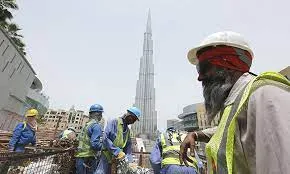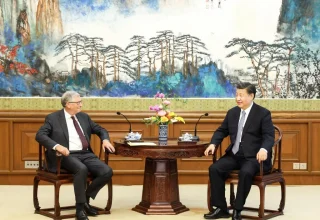
Eastern Europe is seeing a rise in foreign workers on construction sites, signaling a change in the region’s attitude towards immigration. While this shift is driven by economic needs, it stands in contrast to some political narratives that have been dominant in countries like Poland and Hungary, reported Bloomberg.
R ows of white containers house thousands of workers from Pakistan, India, the Philippines, and other parts of Asia in Poland. These workers, hired by the country’s largest company, Orlen SA, are contributing to the construction of a $6.3 billion plastics facility.
Meanwhile, in Hungary, Chinese laborers are busy building electric vehicle battery manufacturing plants. These projects are crucial for the country’s economic future.
Historically, many Eastern European countries have been resistant to the idea of immigration. Yet, a significant labor shortage across Europe has driven a change in this stance.
While politicians have been reluctant to label these newcomers as immigrants, preferring the term “guest workers”, the reality on the ground is that these foreign workers are filling a void in the labor market.
Political parties in Poland have faced criticism for their shifting policies on visas for foreign workers, leading to abandoned plans and political infighting. In Hungary, Prime Minister Viktor Orban’s decision to hire Asian workers is seen by some as prioritizing cheaper labor over local jobs.
Yet, the numbers reveal the necessity of this shift. With unemployment rates in many Eastern European EU countries below 5%, there are at least 670,000 unfilled jobs in the region.
Aging populations and geopolitical situations, like Ukraine’s conflict with Russia, have disrupted the normal labor supply. To keep their economies afloat, these countries are seeking foreign workers.
Orban, for instance, has claimed Hungary will require half a million new workers within two years to sustain its investments. Meanwhile, Poland’s social insurance institution has stated that the country will need at least 200,000 immigrants annually for the next decade to maintain its worker-to-retiree ratio.
However, with this increasing acceptance of foreign labor, there are challenges. In Hungary, the construction of a massive $8 billion battery factory by China’s CATL has seen local houses being converted to accommodations for foreign workers. Some concerns over living conditions have arisen, prompting local investigations.
In Poland, oil giant Orlen has started community outreach campaigns to reassure residents that the foreign worker influx is temporary. These campaigns also aim to combat racism.
While this increasing dependence on foreign labor is driven by economic needs, the topic remains politically charged. Upcoming elections in Poland could see immigration become a central issue, as the ruling party’s past resistance to EU migrant quotas is contrasted with the current need for foreign workers.
In towns like Biala, Poland, where Orlen is housing its workers in container towns, the influx of foreign workers is a cause for both curiosity and concern. As the number of foreign workers grows, tensions could rise, posing a challenge for both companies and local authorities.
Poland plans to hold a referendum on the EU’s migrant relocation plan in October 2023. The ruling Law & Justice party is portraying itself as the defender of Polish identity and security, but its stance on immigration is becoming a source of vulnerability.
The opposition has criticized the Polish government for letting in 130,000 workers from countries like Iran, Pakistan, and Nigeria in 2022, and the government has backtracked on plans to issue as many as 400,000 work permits a year to people from 21 countries.





























